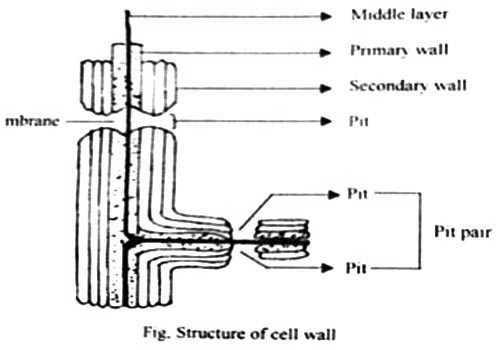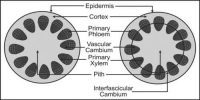Plant Cell wall: The cellulose made, hard and non-living membrane around the protoplasm of each cell is said to be cell wall.
Physical structure: A matured cell wall is divided into three layers:
(1) Middle lamella
(2) Primary cell wall
(3) Secondary cell wall.
Middle lamella: Middle lamella is formed at the telophase stage of mitotic division Phragmoplast of cytoplasm and vesicles or droplets of Golgi bodies combined form the middle lamella.
Primary cell wall: Cellulose and hemicellulose etc that deposited on the middle layer combined form a thin layer Ibis is a primary layer It is formed at the inner surface of the middle lamella.
Secondary cell wall: In some cells (such as- Tracheid, fibre etc) different chemicals may be deposited on the primary layer which forms the secondary wall. Secondary wall is not formed in meristems. Secondary wall is three-layered.

Chemical structure:
(i) The cell wall is usually composed of cellulose, polysaccharide.
(ii) The primary cell wall is formed by the deposition of cellulose, lignin, pectin etc. from the secretion of protoplasm.
(iii) Secondary cell wall is formed by the combination of Cutin, Suberin, Wax, Calcium oxalate and various inorganic salts
Functions of plant cell Wall:
(i) Cell wall gives the perfect shape of the cell
(ii) It protects the protoplasm from the external adversity of the cell.
(iii) It provides the cell with essential energy and rigidity.










